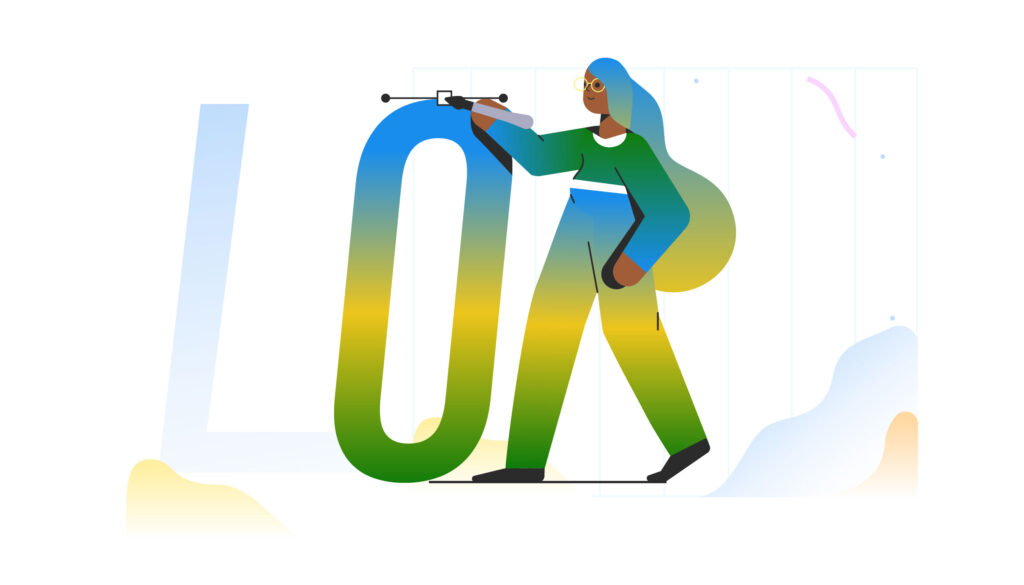Creating a logo isn’t just about throwing some text and an icon together. It’s a detailed process that requires creativity, strategy, and a deep understanding of the brand. While few graphic designers in Rwanda understand the power of using a defined process, many still resort to guesswork. Although the process might differ from one designer to another, we will focus on the elements that are commonly used by designers around the world.

What is Logo Design?
A logo is a visual representation of a brand. It’s often the first thing people see, and it needs to make a lasting impression. A well-designed logo can convey the essence of the brand, its values, and its mission in a single glance.
Importance of a Good Logo
A good logo is more than just a pretty picture. It’s a crucial part of a brand’s identity. It helps build recognition and trust, differentiates the brand from competitors, and can influence consumer decisions. Think of the iconic logos of Apple, Nike, or Coca-Cola – they’re not just images; they’re powerful symbols that evoke emotion and loyalty.
Understanding the Brand
- Defining Brand Identity
Before you even start sketching ideas, you need to understand the brand. What does it stand for? What are its core values? What’s its personality? Defining the brand identity is the foundation of the logo design process. - Researching the Target Audience
Knowing who the brand is trying to reach is just as important. Different audiences have different preferences and expectations. Conducting thorough research helps ensure the logo will resonate with the target demographic.
Setting the Foundation
Knowing who the brand is trying to reach is just as important. Different audiences have different preferences and expectations. Conducting thorough research helps ensure the logo will resonate with the target demographic.
- Establishing Goals and Objectives
Clear goals and objectives provide direction for the design process. Are you looking to create a logo for a new brand, or are you rebranding? What message do you want to convey? These questions guide the creative process. - Creating a Design Brief
A design brief is a document that outlines the goals, audience, and constraints of the logo design project. It serves as a roadmap, ensuring that everyone involved is on the same page.
Brainstorming and Ideation

- Gathering Inspiration
Start by gathering inspiration. Look at logos of competitors and those from other industries. Pinterest, Behance, and Dribbble are great platforms for this. Collecting ideas helps spark creativity and provides a benchmark for what’s possible. - Sketching Initial Concepts
With inspiration in hand, start sketching. Don’t worry about perfection at this stage. The goal is to explore different ideas and concepts. The more you sketch, the more likely you are to land on a unique and effective design.
Typography and Font Selection

Typography plays a crucial role in logo design. The right font can convey a lot about the brand’s personality. Serif fonts might suggest tradition and reliability, while sans-serif fonts are often seen as modern and clean.
When selecting a font, consider readability, scalability, and how well it complements other design elements. Custom fonts can add a unique touch but make sure they don’t compromise legibility.
Color Psychology

Colors evoke emotions and can influence how a brand is perceived. Blue might convey trust and professionalism, while red can evoke excitement and urgency. Understanding color psychology is essential in choosing the right palette.
Choose colors that reflect the brand’s personality and appeal to the target audience. A good practice is to start with a primary color and then select complementary colors that enhance the overall design.
Drafting and Refinement
- Creating Draft Versions
Create several drafts of the logo and explore different variations. This phase is about refining ideas and experimenting with different layouts, fonts, and colors. - Seeking Feedback and Making Adjustments
Feedback is crucial. Share your drafts with colleagues, clients, and even potential customers. Constructive criticism can help you identify areas for improvement and refine the design.
Finalizing the Design
Once you’ve settled on a design, it’s time to polish it. Ensure all elements are aligned, colors are consistent, and the overall design is balanced and cohesive.
Your final logo should be scalable, meaning it looks great at any size. This often involves creating vector versions, which can be resized without losing quality.
Presenting the Logo
When presenting your logo to clients, prepare a professional presentation that includes the design process, different variations, and mockups showing the logo in use.
Explain your design choices and how they align with the brand’s identity and goals. Be prepared to answer questions and make adjustments based on client feedback.
Delivering the Final Product
Provide the final logo in multiple file formats, including vector files (AI, EPS) and raster files (PNG, JPG). This ensures the logo can be used across different platforms and mediums.
Create a usage guide that outlines how the logo should be used. This includes color specifications, minimum size requirements, and examples of incorrect usage.
Conclusion
The logo design process in Rwanda is a journey that combines creativity and strategy. A well-designed logo is a powerful tool that can help a local and regional brands stand out and connect with their audiences. By understanding the brand, setting clear goals, and following a structured process, you can create a logo that is both beautiful and effective.
